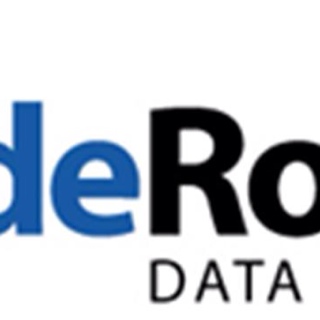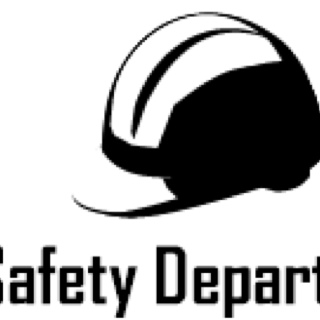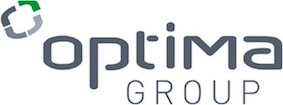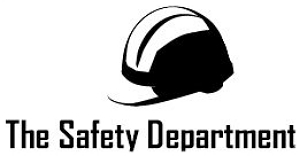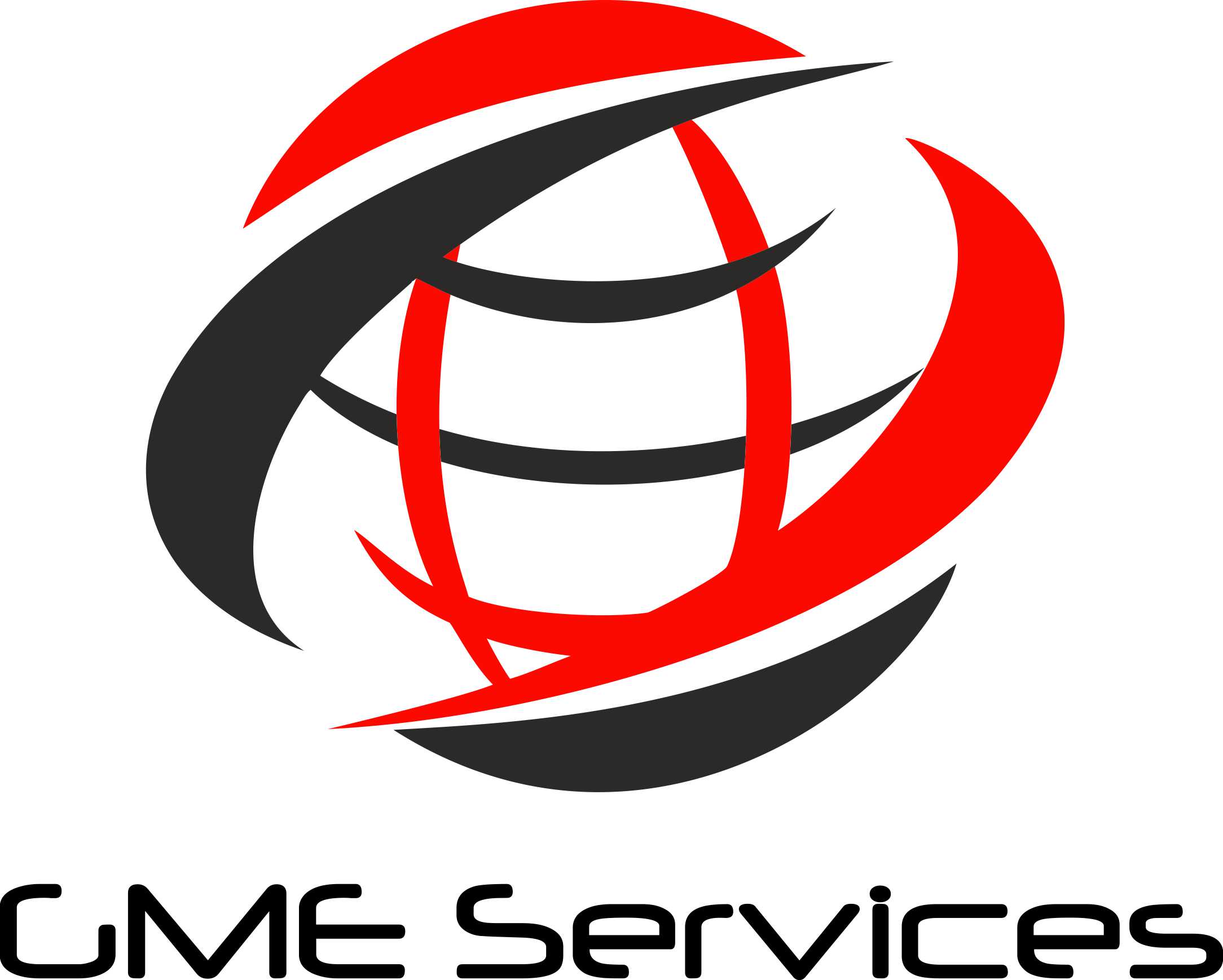Information
-
Score:
-
Audit Ref No: LD
-
Project Name:
-
Project Number:
-
Principal Contractor:
-
Conducted on:
-
Prepared by:
-
Project Manager:
-
Site Manager:
-
Location:
Site Security
-
Have all operatives signed into and out of site?
-
The client or principal contractor may be responsible for general site security but Bladeroom also have a duty to insure their areas are controlled. General Security controls will include signage, barriers, communication with other contractors, secure doors and gateways and fencing or hording.
-
Is this site and the working area secure from unauthorised personnel?
-
All operatives must sign in on arrival and out when departing from site. This is an important part of the fire safety plan and all personnel must be accounted for on the prescribed register.
Documentation
-
Have site inductions been carried out for all personnel currently on site?
-
This should include the completion of the induction training, filling in of the individual operatives records and the photocopying of any evidence of training or testing such as CSCS cards.
-
Have the individual operatives records been completed fully for every person working on this site?
-
As part of the induction process each operative working on the half of bladeroom services must complete the individual operatives record, this serves as a PPE register, confirmation of knowledge of the operatives and method statement and risk assessment, confirmation of training and induction.
-
Have RAMS been prepared, read, understood & signed for?
-
Has a physical inspection been carried out to compare the activity to the safe system of work?
-
This RAMS check is to included all risk assessments, CoSHH and manual handling assessments and there is to be a physical check to ensure the rams are being complied with on site. RAMS must included safe access, egress, loading and unloading as well as the activity specified.
-
Are weekly toolbox talks and daily briefings carried out and recorded?
-
As part of the ongoing, informal training process on site all operatives should receive a toolbox talk or informal site briefing on a weekly basis. This can be conducted by the site manager for employees of blade room and/or The subcontractors supervisor or manager on site. Toolbox talks should consist of a short briefing on a subject which is relevant to the current site conditions and levels of risk. Toebox talk to should be documented using a toolbox talk register and attendance sheet which should be submitted to bladeroom site management as evidence on a weekly basis.
-
Has the plant register & plant inspections been completed?
-
Bladeroom should maintain a register of the plant and equipment they have on site. In addition subcontractors should also have a register of the equipment they bring to site which requires inspection and testing. All electrical plant, lifting equipment, working at height equipment etc require regular inspection and evidence of this should be available in the site office all subcontractors folders. This also includes the register of inspections for any scaffolding which is erected on site.
-
Is there evidence that electrical is subject to regular visual inspections?
-
Electrical equipment should be registered on the plant and equipment register and should be subject to regular visual inspections. Where required audible appliance testing should also be carried out and documented in the site file along with the plant and equipment register. Portable appliance testing is recommended at three monthly intervals for tools and equipment which are used in harsh construction conditions and annually for all other equipment. In some cases a visual inspection may be all that is required.
-
Have all relevant permits been completed, verified, complied with and closed out?
-
This includes checking isolations and site conditions where specified. Permit conditions should be checked prior to work commencing and at the end of the shift or cancellation of the permit to insure site conditions are safe following the work.
-
Are the correct, up to date insurance details and certification available on site?
-
It is a legal requirement for the company to display their employers liability insurance document in the site office. If Knoweside of this exists this document should be held within the site file.
-
Does the site file contain sufficient blank forms, including accident report forms?
-
In order to administer The safety management system on site, the site manager must have access to all relevant forms and a facility for printing, if for some reason no facility for printing exists the site manager should have sufficient blank forms.
-
Has the site manager issued any warning notices to employees or sub contractors for falling below expected standards?
-
This question does not detract from the audit score. Issuing of warnings to sub- contractors or employees demonstrates that the site manager considers contravention of health and safety rules as a disciplinary offence. Site managers should therefore be encouraged to make use of this available process as and when required to help prevent standards from slipping and to enforce the importance of standards with sub contractors and employees.
Quality
-
Are weekly site meetings being undertaken to discuss and report on H&S and quality issues?
-
There should be evidence within the site Office of meetings with the client, principal contractor, other contractors. This can be in the form of meeting minutes, entries into the site diary or emails etc.
-
Are the latest drawings available?
-
Are the latest versions of drawings arriving on site in good time? Are drawing is accurate and do they contain information regarding residual risk?
-
Are in-process inspection checklists being used?
-
Do the site currently use checklists or other tools to help manage quality, are snagging checklists and progress reports used.
Working at Height
-
Is work at heights carried out in a safe manner and in compliance with the safe system of work?
-
Our workers exposed to any risk of a fall which could cause an injury? Is compliance with the working at Heights regulations 2005 in place, this should include the correct selection of equipment and careful consideration of the hierarchy of risk control as stated in the above regulations. This includes operatives loading and unloading vehicles. And any other operation which requires work above ground height or near exclamations or other openings in the ground.
-
Is there sufficient edge protection on in all roof and leading edge areas?
-
Edge protection which is designed to protect a person from falling should be of sufficient strength and rigidity. Edge protection must consist of the minimum requirements of the work at Heights regulations 2005. A toeboard sufficient to prevent items from falling and no less than 150 mm, A hand rail at 950mm and an intermediate rail preventing any vertical gap greater than 470mm. Edge protection should be secured in place and not easily removed.
-
Are all openings and voids protected or guarded?
-
Service riser, lift shafts, stairwells and gaps between scaffold and facade are some of the common voids and openings that can occur on sites. Measures must have been taken to prevent falls of men, materials or tools in these areas.
-
Has the most appropriate access equipment been selected for the tasks being undertaken?
-
Ladders and steps should only be used for short duration (less than 30mins), low risk activities or areas where it is not possible to use a working platform. Ensure podiums, ladders and steps comply with BSEN 131 and are not domestic grade.
-
Is all access equipment in a safe and efficient condition, being used correctly and for its intended purpose?
-
Access equipment should be selected for its suitability for purpose and must be subject to regular user checks and inspections.
-
Is there evidence of access equipment being inspected and checked?
-
Access equipment should be selected for its suitability for purpose and must be subject to regular user checks and inspections.
-
Have operatives been provided with the appropriate level of training and instruction for the access equipment they are using?
-
IPAF, for MEWPS, PAZMA for mobile towers, (or equivalent) safe use and inspection of harnesses and rescue training for harness use, scaffold training for tube and clip scaffolding, basic work t heights training and toolbox talks for ladders, podiums, hop ups and steps?
Materials and Storage
-
Have arrangements been made for safe loading and unloading of vehicles?
-
Wherever possible one-way circuits should be provided. Loading and offloading should be carried out in controlled environments. Loading and offloading should not present a risk of falling to either the delivery driver or the operatives involve. Where loading and offloading requires the use of mechanical equipment this should be subject to all included in the risk assessment and method statement for the activity.
-
Have personnel been trained in manual handling and the use of equipment for loading and off loading?
-
Mechanical loading and offloading should be part of the risk assessment and method statement, operatives should be trained in the use of mechanical lifting Appliances. For standard loading and offloading by hand again controls should be in place and operatives trained.
-
Is there a safe route for materials and designated storage area with good housekeeping?
-
Access for materials into the site and waste from the site should be carefully coordinated. A logistics plan should be available as part of the construction phase plan with the principal contractor. Compliance with these procedures must be followed which should be identified and clearly designated. Housekeeping in storage areas should allow good access for personnel and should avoid trip hazards. Safe stacking should be in place with restrictions on the height of stacks and checks on the quality and standard of bins, pallets and packaging.
Incident Reporting
-
Have all incidents, accidents, near misses been reported and processed correctly?
-
Including compliance with data protection. Site operatives should be encouraged to report all near misses and minor accidents. Records of these should be held in the site file.
-
Is the site manager aware of the RIDDOR requirements and where necessary have incidents been reported correctly?
-
Does the site manager understand the process for reporting serious incidents, the RIDDOR categories and the relevent timescales for reporting, are they familiar with who to report to an how to report when they believe an incident may be reportable under the Reporting of Injuries, Diseases and Dangerous Regulations.
Welfare & First Aid
-
Are the welfare facilities on site clean?
-
Compliance with the Workplace (health safety and welfare) Regulations and the CDM regulations is mandatory on all sites. Facilities should be maintained in a safe and efficient condition and in good order.
-
Is there a supply of drinking water and hot (or warm) and cold water on site?
-
This must include a supply of cold potable water and a means of boiling water. Warm water in or near the toilets for hand washing must also be provided for sanitary purposes.
-
Are there sufficient toilet facilities?
-
Toilets must be available , 1 per 25 personnel as a minimum and should be maintained with sufficient lighting and in a clean and sanitary state. Toilet for women must also be provided separately unless the main toilets are designed to be unisex (that is to say that all facilities are separated and behind doors lockable from the inside, no urinals).
-
Is there a suitable place for operatives to rest, eat and drink?
-
All sites must provide and maintain in a reasonable condition a place where all operatives can rest and prepare food, these should be free from contamination and should include an area for preparing and heating food, and chairs complete with backrests.
-
Are there facilities for drying clothing and getting changed?
-
Where it is possible for operatives to get wet from external works or there is a requirement to change clothes (other than donning outer garments), the site must provide a place for changing and for storing clothes and personal effects which are not going onto site with the operative. Storage facilities should be secure to reduce the risk of theft.
-
Are there sufficient, suitable first aid facilities available?
-
This depends on the level of risk on site and the likely types and severity of injuries it can range from a fully equipped first aid room to a standard 10 person first aid kit. A first aid risk assessment should have been carried out to ensure that the most appropriate equipment is available. Kits should always included antiseptic wipes, plastic gloves.
-
Are the nominated first aiders identified/identifiable?
-
The site first aiders should be identified by the principal contractor and the contractors should also have the names of their own first aiders displayed in the site office or canteen. Alternatively first aiders can be required to wear different coloured hats or high visibility clothing or other markings which make them easily identifiable.
-
Is the first aid box up to date, clean, well stocked and prominently displayed?
-
The first aid kit or a sign denoting its location should be prominently displayed.
Housekeeping and Traffic Routes?
-
Is the site kept clean and tidy?
-
Materials and off cuts, waste material, construction equipment etc should be properly managed, designated waste and materials storage areas should be clearly identified and operatives must ensure the they clean up as they go to reduce the levels of slip trip and fall risk throughout the site.
-
Are cables managed appropriately?
-
Cable management is a priority and wherever possible cables should be routed out of walkways and above head height. 400v cables should be armoured, or placed into suitable protective conduit either underground or above head height. 230v cable leading to step down transformers should be as short as possible and well routed and 110v cable should be in good condition and suspended above head height wherever possible. Cables trailing across landings and at the tops of stair cases present an increased risk of falls.
-
Are working areas and pedestrian routes kept clean and tidy?
-
As part of the fire precautions access and escape routes should not be compromised or obstructed.
-
Are traffic routes clear and unobstructed?
-
Routes travelled by plant and equipment must be segregated and should not be obstructed. Ground conditions should be flat and level potholes and excavations are to be avoided.
-
Is their appropriate signage on access and evacuations routes?
-
Running man signage should be place at any change of direction and should be clearly visible and un-obstructed.
-
Is their sufficient segregation between vehicles and pedestrians?
-
Pedestrians and vehicles must be separated by physical barriers wherever possible. Curbs, railway sleepers, crowd control barriers, Armco can and should be used where the two meet. Appropriate crossing points should be identified and used.
Plant and Equipment
-
Are hand tools safe, appropriate, well maintained and used correctly?
-
A brief inspection of tools should be conducted to ensure that basic hand tools are of an industrial standard and in good condition.
-
Are power tools, safe, appropriate, well maintained and used correctly?
-
Power tools should be present on the plant and equipment registers but more importantly should be in a safe and efficient condition including having appropriate guarding.
-
Is appropriate guarding in place on all plant machinery and equipment?
-
Check that guards are in place and have not been over ridden.
-
Is electrical equipment restricted to battery operated and 110v only?
-
230v should only be used to provide power to step down transformers. Exception can be made at the end of a project when the construction phase has finished for hovers or cleaning machinery but this should be justified by the preparation of the appropriate RAMS.
-
Is work on electrical systems carried out safely and without risk to life.
-
Are appropriate isolations made and a safe system of work in place. Working on live systems must only be carried out when it is not possible to carry out isolations.
-
Are hoists and lifts in use and used safely?
-
Temporary hoists and lifts used for lifting personnel are subject to a 6monthly thorough examination and should be subject to weekly inspection which should be recorded in an appropriate register. If hoists are for materials only then the period is 12months.
-
Are lifting equipment and lifting aids such as geko's, gene lifts, vacuum suckers etc in good condition with evidence of recent inspection and used only by train operatives?
-
A careful inspection of lifting equipment should be carried out, it's physical condition and the conditions in which it is stored and used should be carefully assessed. Thorough examinations and inspections should also be in date. Lifting accessories such as strops, shackles and chains are subject to 6monthly thorough examination whereas appliances used for lifting meatier las only should be thoroughly examined every 12months.
-
Is there an appropriate lifting plan in place for all lifting activities?
-
Major lifts should be under contract lift only. Where an installation requires the use of specialist lifting equipment or cranage it must be subject to a lifting plan and method statement which must be prepared and check by an appointed person. Lifts should only be carried out by appropriately trained AP's, lift supervisors and slinger signallers.
PPE
-
Is appropriate PPE available, maintain, worn and used correctly on this site?
-
The appropriate PPE must be used. Site managers can enforce the use of PPE if it is part of the site rules or the contractors RAMS specifically require its use. PPE should be in good condition and work correctly. Hats on backwards, high vis vests cut off and safety boots with metal toecaps showing through are all non compliant. PPE should comply with the appropriate BSEN for construction site use. Standard PPE is hat, boots and high visability vest unless otherwise stated by the principal contractor or client. (It is common for sites to require safety glasses and gloves to be worn at all times, if this Is part of the site rules or specified by the RAMS then it must also be worn).
Manual Handling
-
Are manual handling operations being carried out safely and within current guidence?
-
Lifting activities involving loads in excess of 25kg per person, which involve excessive twisting and bending or which involve loads which are difficult to grasp should be carefully assessed (risk assessment). Operatives should be employing good lifting techniques as per their training and should be making use of all available lifting aids.
Fire
-
Is fire fighting equipment sufficient and adequately maintained?
-
Fire extinguishers should contain the appropriate medium for the likely fire. They should be uninstructed, fitted with a safety pin. Check that extinguishers have a full charge and that they are in date for their annual service by observing the sticker on the side.
-
Are emergency procedures and signage clearly displayed?
-
Emergency procedures should be displayed on site and should form part of the induction process. Signage must be prominently displayed in all working areas.
-
Are temporary buildings adequately maintained?
-
Ports cabins and ISO containers should be in good condiiton. Where they are supplied with electricity they should display an appropriate sticker with the date of installation which confirms they were installed to the appropriate BSEN. Access to temporary buildings should be flat and level and where units are stacked the stairs should be correctly and securely installed.
-
Are no smoking procedures established and complied with?
-
Smoking only in designated areas.
-
Are emergency exit routes safe, un-obstructed and clearly signed?
-
Fire exit doors and routes must not be obstructed at any time.
Environmental
-
Is lighting suitable and sufficient?
-
The principal contractor is usually required to provide general lighting whilst task lighting is the responsibility of the contractor or sub contractor. Lighting levels should be adequate in all working areas and on access and escape routes. The actual level of light will be dictated by the type of work being carried out.
-
Is noise managed in accordance with environmental and client restrictions?
-
Areas where noise is likely to exceed 80db(a) over an average 8 hour shift will require a noise assessment. If it is difficult to be heard over a distance of 2meters in normal conversational tones then the noise level is likely to have exceeded 80db(a). Once an assessment has been carrie out if the noire levels are between 80-85 db(a) then hearing protection is to be provided and a toolbox talk on noise must be carried out. If the noise is exceeding 90db(a) then the use of hearing protection must be enforced and mandatory hearing protection zones must be established complete with mandatory signage.
-
Are dust levels controlled?
-
Vacuum extraction, damping down or non dusty processes should be considered where dust exceeds the CoSHH action level of 10mg/cubic meter.
-
Is waste being controlled and disposed of appropriately, waste transfer notes and licences held?
-
Waste must be controlled, timber should be de-nailed, bins and skips should not be overflowing. The waste contractor should have provided their waste carriage licence to the principal contractor and each load should be subject to a waste transfer note which should be copied and provided to the PC for inclusion in the site waste management plan.
Hazardous Substances
-
Are all hazardous substances dealt with in accordance with the relevant CoSHH assessment?
-
The application and use of hazardous substances should be in compliance with the contractors RAMS.
-
Are hazardous substances stored safely?
-
Where flammable liquids exceed 50lts in small containers they should be stored in a flameproof container in the workplace. Tops and lids should be firmly in place and containers should be appropriately marked. Where flammable gases are stored they should be upright, secured and seperated from oxygen or oxidisers by at least 6 meters or a 1hour fire retardant material.
-
Is appropriate LEV, RPE and PPE in use?
-
Local exhaust ventilation, Respiratory protective equipment and personal protective equipment provided for the use of hazardous substances should be in good condition and should be effective in controlling the risks.
-
Is their adequate asbestos information on site and has it been removed from the scope of works prior to starting?
-
Asbestos can be found in old buildings and the ground. Where there is a risk of asbestos containing materials the principal contractor should provide a survey report identifying the location! type and condition of the materials. Under no circumstances are operatives to work on or near asbestos what there is a likelihood of fibre release.
Signage and Notices
-
Are fire and emergency signs clearly displayed?
-
Signage should be appropriate and displayed prominently
-
Is there sufficient directional signage?
-
Signage should be appropriate and displayed prominently
-
Are there sufficient hazard warning signs?
-
Signage should be appropriate and displayed prominently
-
Are the relevant notices and documents displayed?
-
The site set up should included a copy of the H&S law poster, the principal contractors employers liability insurance and a copy of the f10 notification for the project. Although it is the PC's responsibility to display these items it is an offence for any contractor to work on a site which has not been notified to the HSE when it should have been.
Health Surveillance
-
Were any issues correctly documented at the induction stage (existing medications etc)?
-
Have operatives completed the question on the induction form?
Closeout
-
Has the report from the previous visit been printed?
-
Site managers should record the actions they take to close out the items on this report, on a printed copy of this report or within the site dairy. A copy of this report should be add to the site file.
-
Have all items picked up on the previous report been appropriately actioned?
-
All items from the previous report should have been addressed. If not this should be highlighted here. If the item was a major non conformance then it should be identified as such again.
-
We're any major non-conformances identified during the inspection?
-
A major non-conformance includes any threat of death or serious injury or any unsafe act or condition which could lead to enforcement action.
If any of the items addressed on the report could be considered a major non conformance this must be marked as such and will have a significant effect on the score.
Closeout
-
Additional information/auditors comments:
-
Any other comments from the assessor should be included here. Details of the progress or stage of site may be useful.
-
Site Manager:
-
Auditor:
